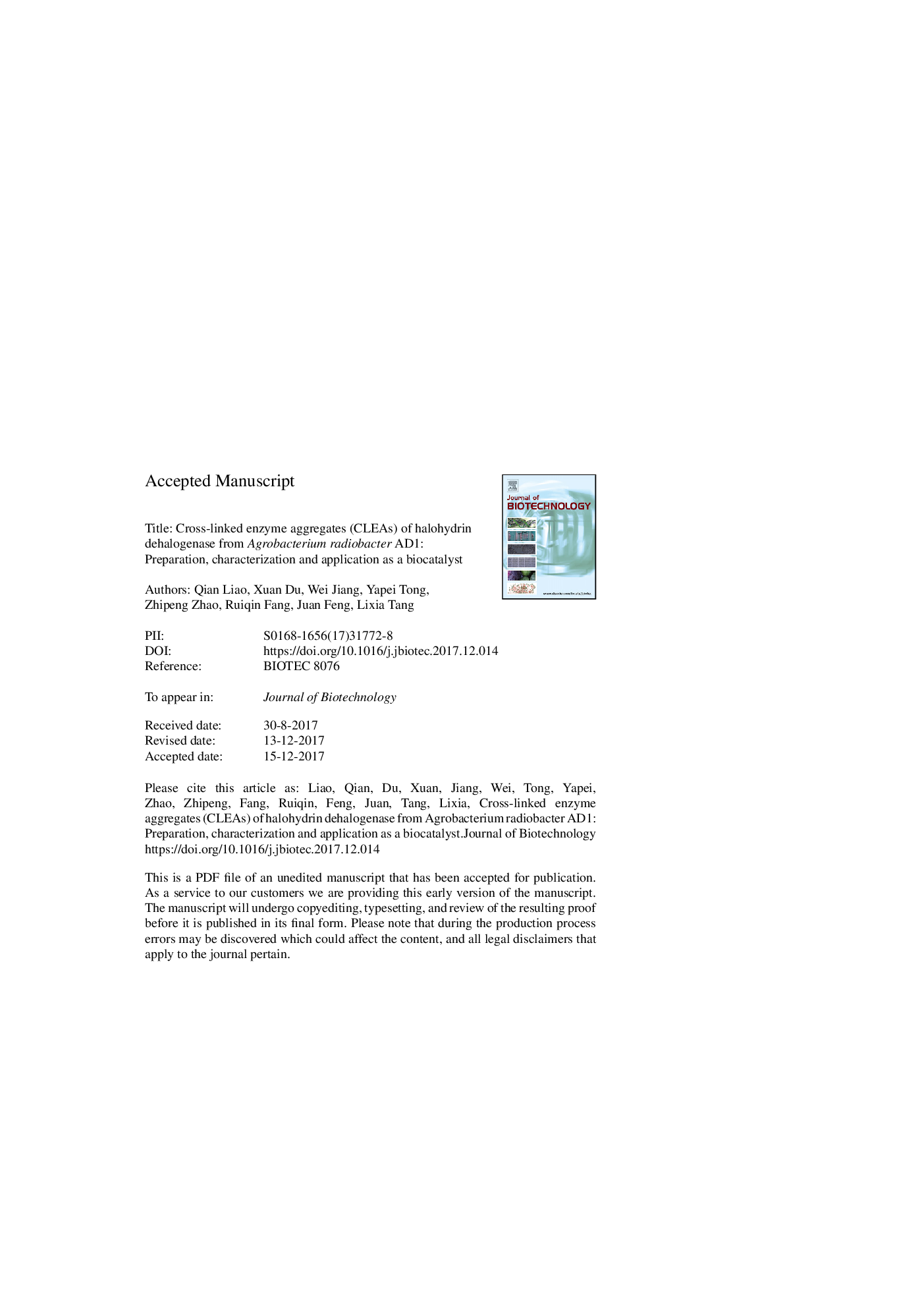| Article ID | Journal | Published Year | Pages | File Type |
|---|---|---|---|---|
| 6490333 | Journal of Biotechnology | 2018 | 43 Pages |
Abstract
Halohydrin dehalogenase from Agrobacterium radiobacter AD1 (HheC) shows great potential to produce valuable optically pure epoxides and β-substituted alcohols. However, this enzyme has been reported to be very sensitive and less stable under oxidative conditions. Enzyme immobilization represents a powerful means to overcome this limitation and provides the enzyme characteristics of a biocatalyst. In this study, the crude extract of HheC was directly subjected to enzyme immobilization using a carrier-free cross-linked enzyme aggregates (CLEAs) method. The results showed that under the optimized conditions, the obtained HheCCLEAs retained more than 90% activity of the free enzyme; preserved more than 50% of their original activity after storage at 4â¯Â°C for 2 months, even in the absence of a reducing agent; displayed a strong tolerance to organic solvents with fully active after incubation in the presence of 50% cyclohexane and n-hexane for 5â¯h; the presence of organic solvents could minimize the negative effect of enzyme immobilization on the enzntioselectivity of HheC. Most importantly, HheCCLEAs maintained more than 70% activity after 10 reusability cycles. The utility of HheCCLEAs as a valuable biocatalyst was exhibited by the kinetic resolution of azide-mediated ring-opening reaction of rac-1,2-epoxy-2-methylbutane. These results indicated that HheCCLEAs overcame some disadvantages of free enzymes to become biocatalysts. Together with further engineering of the enzyme, HheCCLEAs could become a promising biocatalyst for the synthesis of valuable chiral compounds.
Keywords
Related Topics
Physical Sciences and Engineering
Chemical Engineering
Bioengineering
Authors
Qian Liao, Xuan Du, Wei Jiang, Yapei Tong, Zhipeng Zhao, Ruiqin Fang, Juan Feng, Lixia Tang,
